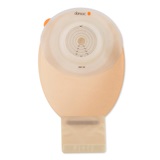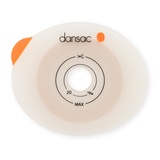Being Comfortable in Your Own Skin After Ostomy Surgery
After undergoing colostomy surgery as a young mother, Amanda became an ostomy advocate. Years later, she’s enjoying where she is in life, and offering tips for living normally with a stoma.

Learn how Amanda became confident, capable, and comfortable in her own skin.
At 30, Amanda had three young children and was experiencing the first symptoms of rectal cancer. Initially her doctor diagnosed haemorrhoids and asked her to provide a stool sample as a precaution – which she forgot to do. In late 2015, she experienced a blockage and had difficulty going to the toilet. This led to a Stage 3-4 rectal cancer diagnosis. The recommended treatment was a radical surgery that would result in a permanent colostomy.
Amanda is so thankful that her ostomy surgery allowed her to survive cancer. Watching her children grow up kept her positive and strong throughout her cancer journey. She continues to be grateful for the lessons she has learned along the way, embracing each day and her time with her kids to its fullest.
One of the challenges Amanda faced post-surgery was the impact on her fitness and her love for the gym. It took her 12 to 18 months after surgery to take up exercise again. This period of rest allowed inflammation and abdominal pain to subside, and gave her body time to heal.
Amanda shares her story openly to increase ostomy awareness and knowledge, help others feel less alone, and destigmatize the topic. “People are blown away when they hear my story and see that I live normally with a colostomy,” she says.
Amanda’s tips for living with and managing an ostomy
Over the years, Amanda has learned several things that she likes to share with others – to help them live well with a stoma:
- It’s important to follow your stoma nurse’s directions – especially when it comes to managing your ostomy pouch. “Be gentle as you take the skin barrier off, and use adhesive remover spray if needed,” says Amanda. “And be sure to take good care of the skin around your stoma; cleanse the area with water,” she continues. “Having a good skin care routine helps prevent irritation and discomfort over the long term.”
- You can feel confident swimming with your stoma bag. “I spend a lot of time at the beach, and I’m always well prepared with spare pouches – but an ostomy bag is actually unlikely to come loose in the water,” says Amanda. “If you want to use some ostomy accessories for extra assurance and security, ask your stoma nurse what products you could try.”
- Be aware that certain foods may affect your output differently than before your surgery. “I found that spicy foods can have a laxative effect on me now and some dairy products don’t go down very well, so I’m a bit more considered in what I choose to eat and when,” says Amanda. “For example, if eating a certain food means I’ll need more time to change my pouch, I only eat it when I’m at home with everything easily accessible.”
- Embrace your stoma and focus on the opportunities it’s going to give you. “For me, it was knowing that I was getting the opportunity to stay alive and raise my three children,” says Amanda. “Your opportunity may be experiencing a better quality of life, having the ability to eat any foods you want, or allowing for some healing to happen.”
For Amanda, stoma surgery not only saved her life, but also helped her appreciate every day. “I am enjoying where I am in life right now,” says Amanda “I feel confident, capable, and comfortable in my own skin.”
People who provided testimonials received compensation from Hollister Incorporated. The testimonials, statements, and opinions presented are applicable to the people depicted. These testimonials are representative of their experience, but the exact results and experience will be unique and individual to each person.
- 1 Shares
- 10 Recommended

 Email Us
Email Us
 Call Us
Call Us





